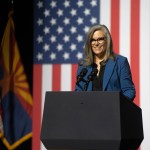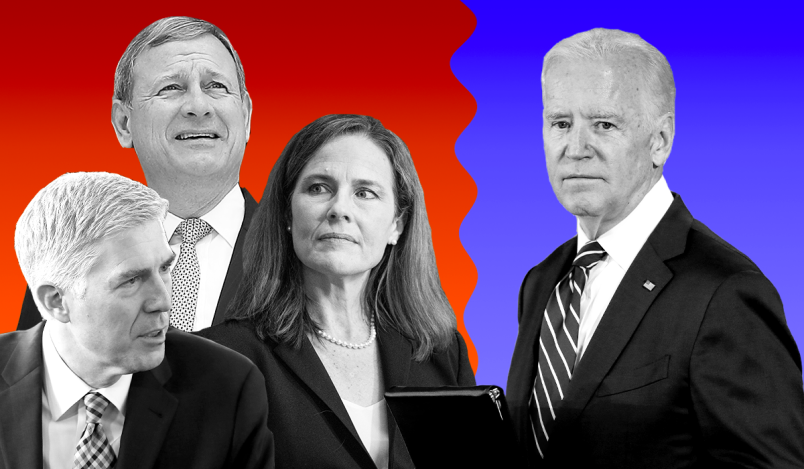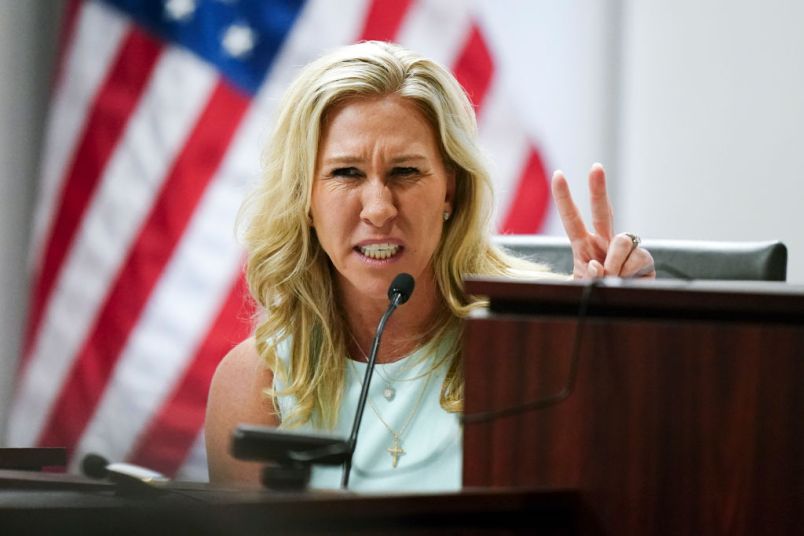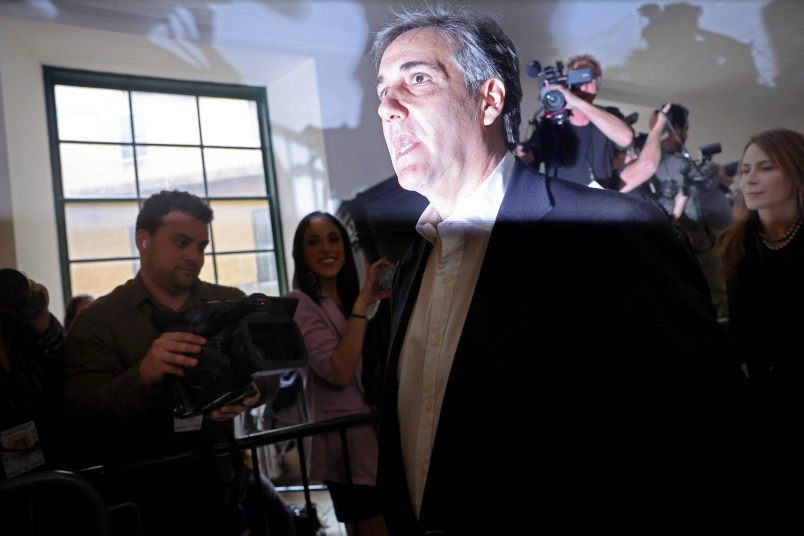The Supreme Court will hear a case in February that could decide the future of the Biden presidency — and gut its ability to mitigate climate change in the face of congressional inaction.
The case, West Virginia v. EPA, centers on the Environmental Protection Agency’s ability to regulate greenhouse gas emissions from power plants. Should the Court move to limit what the EPA can do, that, alone, would be incredibly significant.
But the Court, with its heavily conservative slant, could take the opportunity to go further, slashing the power of federal agencies across the board, a move that would hobble the Biden administration’s ability to enact its climate agenda as well as a long list of other priorities.
“There is a significant likelihood that how the Court handles this case will affect how much leeway agencies have to interpret authority statutes going forward,” Jonathan Adler, founding director of the Coleman P. Burke Center for Environmental Law at the Case Western Reserve University School of Law, told TPM.
On environmental policy in particular, Congress has been unable or unwilling to pass major legislation for about 30 years, a stasis that has continued even as the dire threat of climate change has become evident. That leaves agencies like the EPA as the only entities available to take up the slack, slowing climate change through their regulatory and rule-making abilities. If the Court limits the EPA’s power to regulate, there are no strong, dependable avenues left on the federal level to make environmental policy.
Fear of the Court’s potential for aggression here is not mere speculation. Last week’s arguments over a couple of Biden administration vaccine mandates gave the justices ample time to air their skepticism over the exercise of agency power, even in a case concerning health-care facilities where the agency’s congressionally-given authority is fairly explicit.
This case sparked apprehension in court watchers ever since the justices first agreed to take it up, back in the fall.
Their decision to do so was a surprise. It’s an old case concerning the Obama administration’s Clean Power Plan, which the Supreme Court stayed in an unsigned decision back in 2016. The current administration has no intent to revive it because its thresholds and due dates are all obsolete.
Why, then, would the Court — a body that usually looks for reasons not to take cases rather than reasons to take them — accept a case concerning a rule that will not go into effect?
“Because they wanted to do something nasty to EPA’s power,” Michael Gerrard, founder of Columbia Law School’s Sabin Center for Climate Change Law, speculated to TPM.
A group of red states and coal companies are asking the Court to rule that the Clean Air Act does not allow for Obama’s Clean Power Plan, putting limits on how much the EPA can regulate greenhouse gas emissions. The Clean Air Act requires power plants to use the best system of emission reduction available — a standard determined by the EPA.
That’s part of a normal process. Congress delegates power to agencies in laws, and the experts that make up the agencies are trusted to make those technical decisions. But the Court, born from the rightwing legal world, has shown a hunger to upend that way of doing business.
“There are a range of possibilities, none of them good,” Gerrard said.
The “best” of those, Gerrard said, would be a ruling based strictly on the statutory interpretation that the Clean Air Act does not allow the EPA to enforce the Clean Power Plan. The Clean Power Plan required plants to not only burn coal more efficiently, but to actually move away from coal to cleaner energy sources.
“That would be damaging but limited,” Gerrard said.
But the Court could go further, using this case in its quest to limit agency power. One of the tools the conservative justices could use to achieve that is the major questions doctrine, which holds that some issues are of such economic and political significance that the Court will assume that Congress did not intend to delegate that power to the agency unless the statute is specific.
It’s squishy, and gives the justices significant power to smack down regulations: how do you determine levels of economic and political significance? How do you decide what statutory language is specific enough to count?
The conservative justices also showed a willingness to approach cases through the lens of this doctrine in the vaccine mandate case last week, many suggesting in their questioning that Congress needed to be much more specific in its conveyance of authority.
In theory, the major questions doctrine is circumventable. If the justices really are worried about Congress’ intent, legislators could just pen a law clarifying that the agency is allowed to do whatever it’s trying to do — in this case, regulate power plant emissions by, in part, forcing the plants to migrate to cleaner energy sources.
But the Senate, rent by hyperpolarization, with one party that only tepidly accepts the fact of climate change and another paralyzed by the filibuster, is almost certainly not capable of currently passing that kind of legislation. And it hasn’t been, in terms of environmental legislation, for decades.
“It’s very unlikely that the Court does much with the greenhouse gas case without saying something significant about major questions,” Adler said. “That could matter for agencies going forward, especially if Congress continues to show relatively little interest in revisiting and revising various statutes.”
But the Court getting aggressive on the major questions doctrine is still not the worst possible scenario. It’s the conservative justices gutting the Clean Air Act with the nondelegation doctrine, a theory that has largely lain dormant since the New Deal era.
The doctrine puts massive limitations on Congress’ ability to delegate power to agencies. In the interpretation espoused by Justice Clarence Thomas, agencies can’t issue regulations at all, leaving it to Congress to direct agency policy. That view of the doctrine could leave the Clean Air Act a shell of itself, and would, Gerrard said, “have enormous implications across the administrative state.”
“If the Supreme Court disables the EPA and other agencies from using even laws on the books … that’s a very regrettable situation,” he sighed.










